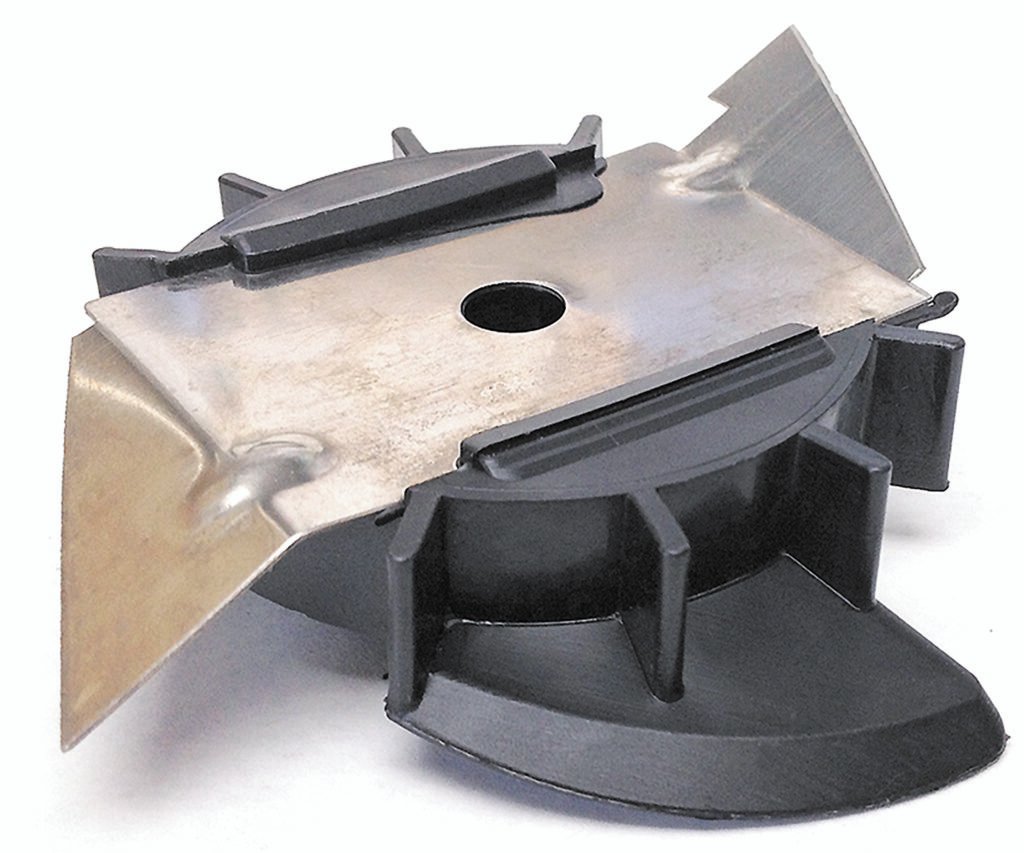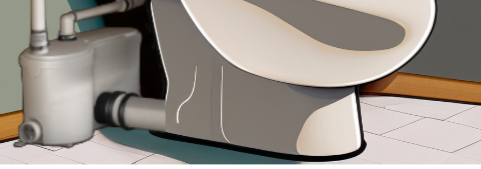If you’ve ever wondered how toilet macerators work, now you can find out!
Most toilet, or waste pumps, involve two aspects:
Macerating, or chewing/grinding/breaking down, and pumping.
How Macerators Work
First off, what do macerators do?

They macerate, or chew, solids into smaller pieces. That’s all this fancy word means.
Macerators are devices that break down solid waste into smaller pieces, making it easier to dispose of. They are commonly used in situations where traditional plumbing systems are not feasible, such as in basements or other areas where the main sewer line is located at a higher elevation.
Macerators work by using a motorised stainless steel cutting blade, as seen in the photo above, to grind up solid waste into smaller pieces. The waste is then mixed with water to create a slurry, which can be easily transported a small pipe and into the main sewer line. Macerators are typically used in bathrooms and kitchens, where they can be attached to toilets, sinks, and other fixtures.
Once the pumped slurry reaches the nearest pipe connection, whether vertical or horizontal, it then lets gravity take over and joins with the rest of the waste of the property.
Anywhere there is waste such as a toilet, sink, shower, etc without nearby “gravity” drainage, a macerator is the perfect solution.
How Pumps Work
That’s the first bit out of the way, now we know how the solid waste is broken down, but how does the pumping aspect work?

To put it simply, pumps are machines that move fluids from one place to another.
They are used in a variety of applications, from pumping water out of a well to circulating coolant in a nuclear reactor.
The basic physics behind pump operation is the transfer of energy from the pump to the fluid. This energy transfer can be accomplished in a number of ways, but the most common method is through the use of an impeller. An impeller is a rotating component that is used to transfer energy to the fluid. As the impeller rotates, it creates a centrifugal force that pushes the fluid outward, increasing its velocity and pressure.
Overall, pumps are essential machines for moving fluids in a variety of applications, and their operation is based on simple but powerful principles of physics.
In order to pump water from a lower elevation to a higher elevation, the pump must be able to overcome the force of gravity.
This is accomplished by creating a pressure differential between the inlet and outlet of the pump. The pump inlet is typically located at the lowest point in the system, and the outlet is located at the highest point (not always, though it must be higher than the impellor).
As the impeller rotates, it creates a low-pressure zone at the inlet, which allows water to flow into the pump. The impeller then transfers energy to the water, increasing its pressure and velocity. This high-pressure water is then forced out of the pump and into the system, where it can be used for a variety of purposes. In context of Saniflos and other waste pumps, this is how it moves water from the little white box to where ever it joins the normal waste pipe system.
Let’s Move onto Saniflo Systems
So your toilet, sink or shower flows into a noisy little white box, and now we know the macerator is a little steel blade that churns all the solids into a slurry, and the pump pushes the slurry/liquid into the nearest normal drain pipe.
Simple!

Saniflos are innovative and cost-effective systems that can make bathroom installations a breeze. Unlike traditional plumbing systems, Saniflos do not require laying pipework under the floor and attaching it to the main drain line.
Instead, Saniflos use an upflush pump to move waste up and out of the unit and into the main stack of your drainage system.
So how exactly do Saniflos work?
When you flush a toilet or run a sink or shower with a Saniflo attached, the Saniflo box fills up, then the waste is moved into the macerator unit. The macerator unit grinds, softens and churns up the waste, making it easier to dispose of. The waste is then pumped out of the unit and through the small pipe about the same size as an overflow pipe. The beauty of this is, you can take it anywhere and can cope with multiple bends to get around tight spaces, unlike drainage systems which rely on gravity.
Saniflos are a great option for homeowners who want to add a bathroom to their home without the hassle and expense of traditional plumbing systems. According to Saniflo, Saniflos can save you thousands of dollars in plumbing and construction costs.
In conclusion, Saniflos are an innovative and cost-effective way to add a bathroom to your home. By using a macerating system and an upflush pump, Saniflos can move waste up and out of the unit and into the main stack of your plumbing. This makes it possible to install an upflush toilet in a variety of locations, including basements and other areas where traditional plumbing systems are not feasible. I’ve even seen them installed in cupboards!
For more on pumps related to waste and other drainage, click the button below:


Leave a Reply